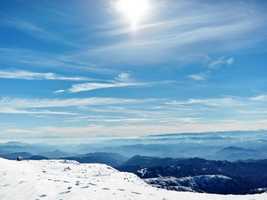
"Kopaonik" National Park extends over the highest and most preserved parts of the Kopaonik mountain, which rises in the central part of southern Serbia. It was protected for the first time in 1981. The national park begins at a height of about 800 m, and ends with mountain ridges interconnected by high passes. They are dominated by the highest Pančićev peak (2,017 m above sea level). It is woven from mountain peaks, pastures, dense conifer and mixed broadleaf and conifer forests, plains with springs, gorges, flooded streams and peatlands. Kopaonik is characterized by a high degree of biological diversity. It is adorned with diverse ecosystems made up of numerous species and their communities. Over 1,600 species of plants have been found on this massif. Also, there are three local, Kopaonican endemics. These are Kopaonička custokuća, Kopaonička violet) and Pančić's režuha. The national park, in addition to its scientific, ecological and educational significance, also has tourist significance. Kopaonik is the largest and most beautiful winter tourist center in Serbia. The vegetation richness of the national park is reflected in the presence of 65 plant communities, which indicate that this area, in addition to floristic, is a significant center of vegetation diversity in Serbia and the Balkan Peninsula. Ecological diversity also determined the richness of the animal world. Six species of amphibians and six species of reptiles are present in the national park, eight of which have the status of protected species in Serbia. The bird fauna includes over 170 species, while the mammal fauna consists of over 40 species.
To receive our best monthly deals
JOIN THE NEWSLETTER
